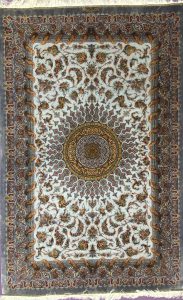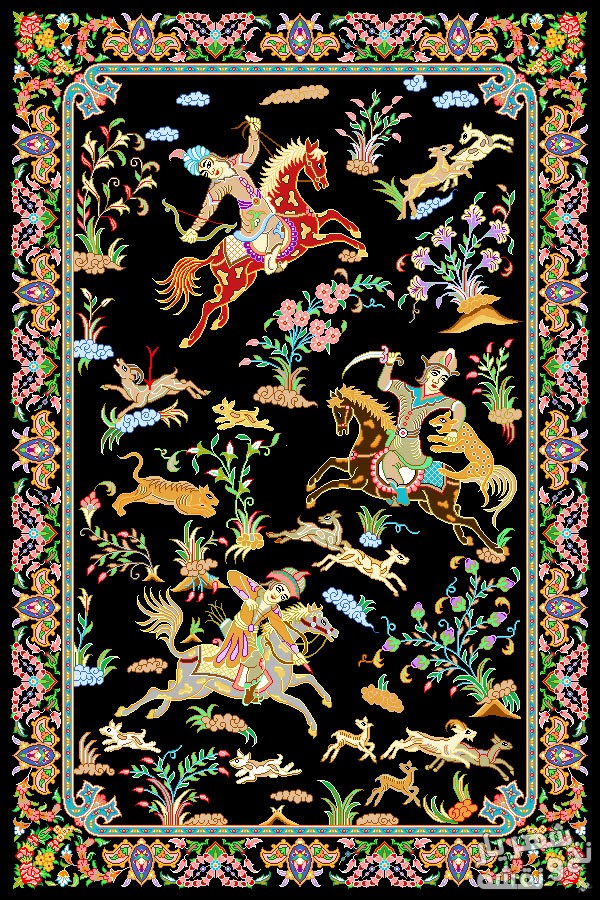The most experienced carpet manufacturer in Qom province
Common Designs
Qom carpet designs, like the colors used, have a special variety and breadth. The old carpet maps of Qom were designs known as Latchak and Toranj Shah Abbasi , Muharrams, Mihrabi and Hunting Grounds. These designs, which were adapted from the maps of Kashan and Isfahan, quickly evolved with the creativity of Qom’s designers and a new style emerged in iran’s carpet weaving industry.This style became known as “Qom carpet style” with features such as master design and coordination of exquisite and unique paintings and paintings.
The role of the idol is as much as it is used in the Turkic-speaking villages of Hamedan with a special situation of the region, in the Persian-speaking villages of Qom it is woven in warm fields in the sizes of two cubits up to 7 square meters. Islamic, Khatai, elastic and bergamot designs as well as tree designs such as Isfahan rugs are among the designs that have the most products. Coma maps (tree, animal, shrub) and Shah Abbasi Gol Farang have a remarkable beauty and original colors in terms of the possibilities of their design and color. Although the design of hunting rugs originated from Isfahan, but many examples of this design can be seen in silk carpets woven in Qom, and finally, considering the variety of patterns and skills that we find in Qom weavers, it would not be surprising if we see the production of geometric designs. And be semi-geometric in the weaves of this region. Thus, the texture of geometric designs such as Caucasian rugs and Herati maps called tangled fish, which in a polygonal medallion occupy the text of Qom rugs, sometimes arouses the viewer’s surprise that she has always thought of the originality of the designs of each region. Qomi weavers prefer to weave the most pleasant designs of other carpet weaving centers in Iran, which have become desirable and acceptable to everyone over time, with slight changes. It does not seem very important if its carpets are confused with the carpets and rugs of Isfahan and Kashan in terms of similarity of the map. In general, common designs in Qom carpets can be summarized as follows:
Brick (Mosaic of Bakhtiari), Bhathai, tree, hunting ground, Joshaghani geometry, Shah Abbasi, Lachak Toranj, Shah Abbasi Afshan, Mahramat, Taranjai plain floor, Katibeh, Mehrabi, Gol Farang and Zol-e-Soltani, Mohtasham and Khashti.
Frequent shrub designs are more common than pot designs. Many pieces also have a central medal and various designs on the sides and corners. Qom carpets can be distinguished by the light colors of its background (ivory white, cream, yellow), which in general, this background is free of fringes and wrinkles. Although their role in the topics they present has some instabilities and variability, in most cases it represents two types of role:
One of these two roles is the small stylized cypress, which is sometimes mistakenly called the role of Kashmir, and the other role is Susan al-Sultani. This role is a vase full of flowers on which small and beautiful birds fly.
Rarely do we come across carpets from Qom that have a collection of real cedars among flowering plants and trees and are imitated from the delicate and delicate designs that have embossed the two silk carpets and the old tomb of Shah Abbas in Qom.





بدون دیدگاه